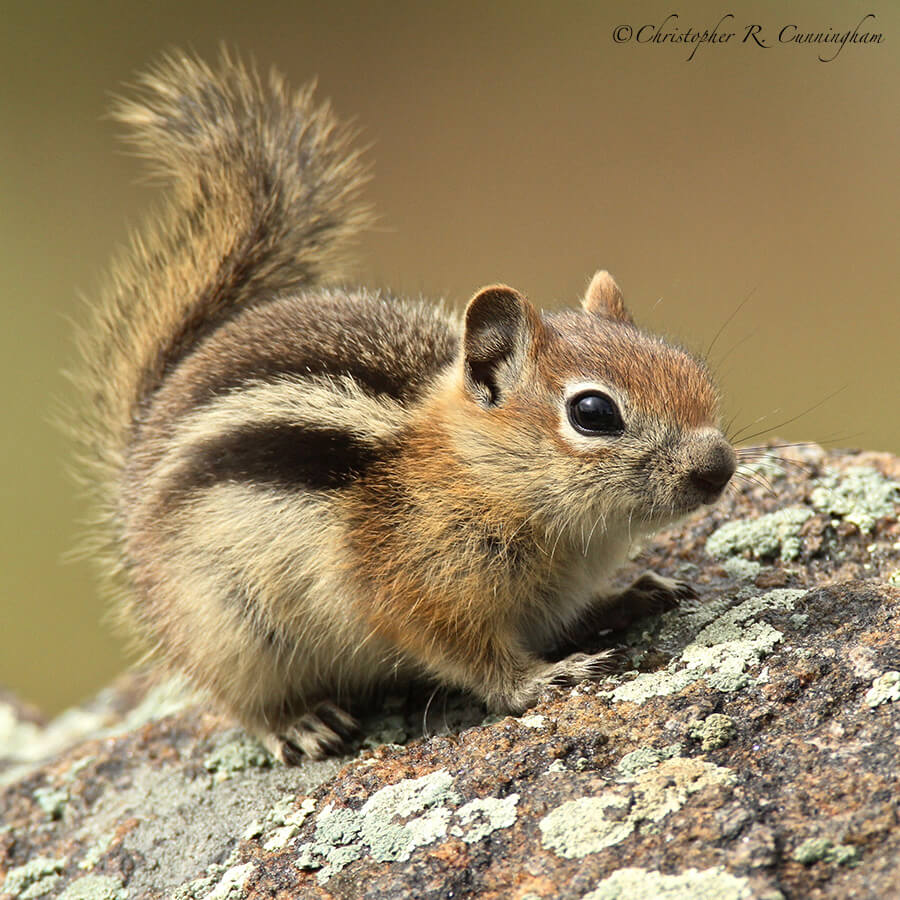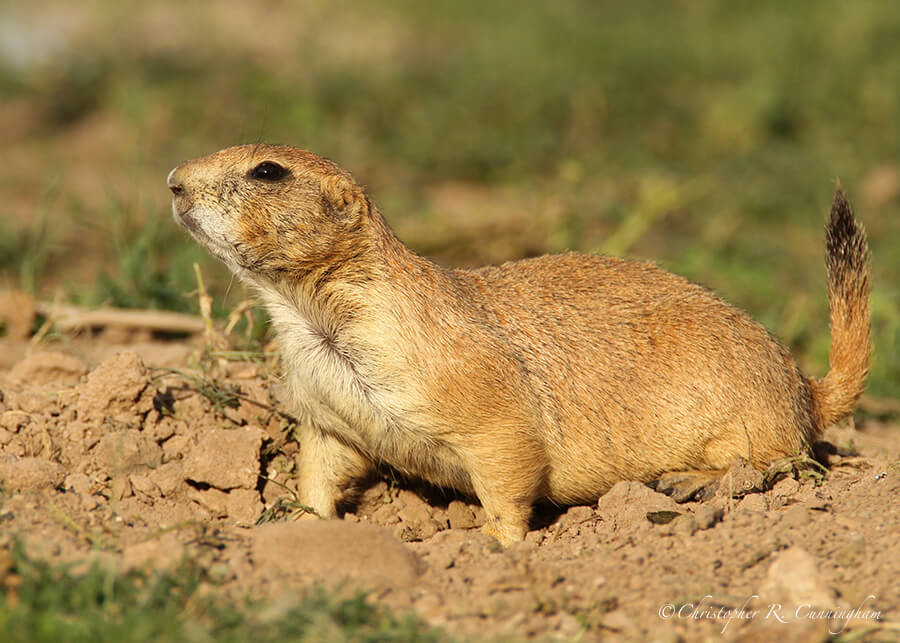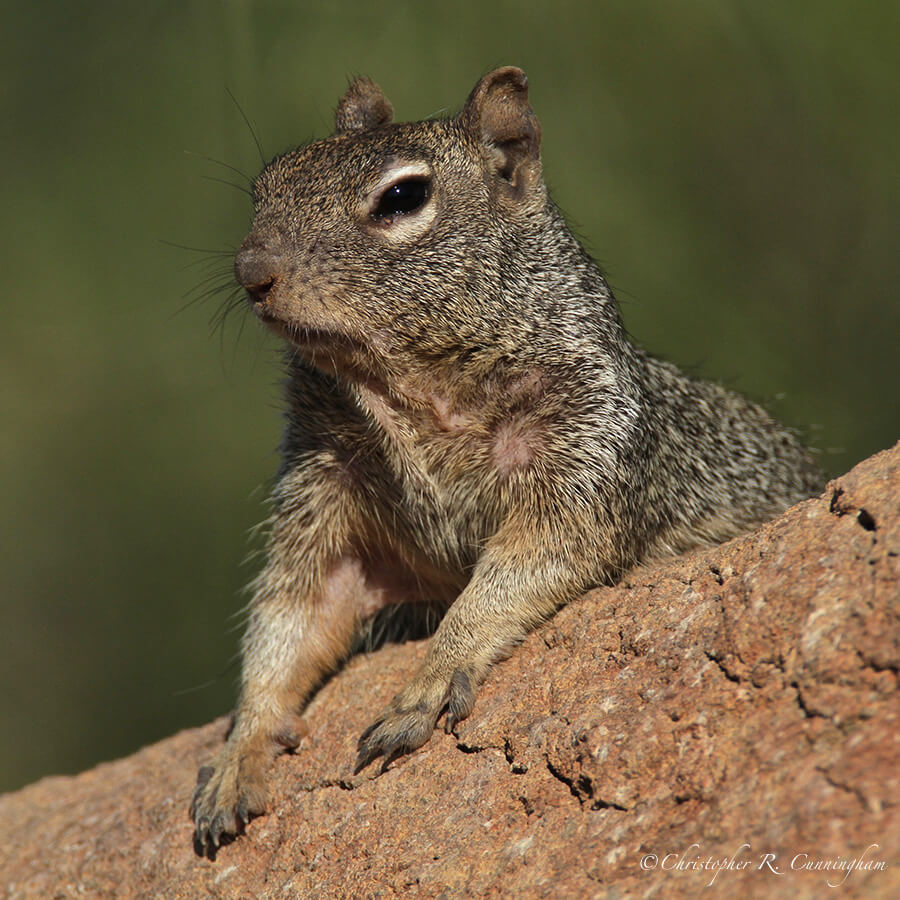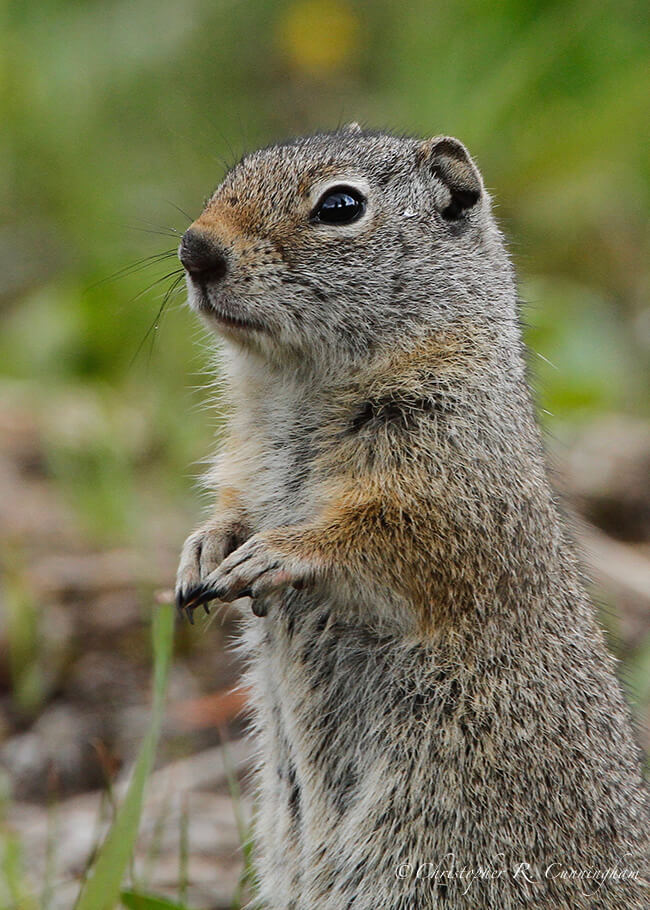Digging in the dirt
Stay with me I need support
I’m digging in the dirt
Find the places I got hurt . . . . —Peter Gabriel, Digging in the Dirt

When birds are not around, the bird photographer must find other critters to photograph. Often that honor falls to ground squirrels and kin! As is my usual methodology, I research the animals I encounter in the field. Just as in the case of birds, ground squirrels tell a mixed story of success and struggle in a human-dominated world.
Not surprisingly, we’ve really only seen ground squirrels that are doing pretty well (for the most part) since we haven’t yet mounted specific expeditions to see and photograph the rare and threatened ones like the Mohave, Townsend’s, or Washington ground squirrels. Make no mistake, some ground squirrels are battling for survival against many of the same menaces facing birds–habitat destruction, cats, and poisons.

Although technically considered a species of “least concern,” the areal extent of Black-tailed Prairie Dog colonies has fallen to about 2% of historical levels. Considered by many farmers and ranchers to be pests (Get the bazooka, Joe!), these burrowing rodents are lynchpins of their local ecology. They have many interesting ecological relationships with a variety of other organisms. Birders might be concerned about their fate given their role as prey to a variety of raptors including Red-tailed and Ferruginous Hawks and Golden Eagles. Also, Burrowing Owls will nest in prairie dog burrows (and the burrows of many other mammals, as well). In 2004, the black-tailed prairie dog was removed from consideration for endangered status based on population studies. One wonders what the level of concern would be if the range of human distribution decreased by 98% in a century and a half. I bet everyone would think everything was OK.
The rock squirrel is a suspicious fellow we see occasionally on outings in West and Central Texas and Arizona. This is a big, dark chunky squirrel that is way more timid than one would expect given its heft. Try and flush one of these characters into a pillowcase, BM! At places like Franklin Mountains State Park and Lost Maples State Natural Area, these seed-hogging marauders can often be seen emptying the bird feeders of seeds. In contrast to the prairie dog, this is not a popular squirrel among the birds—nor likely anyone maintaining a seed feeder within its range (Get the blunderbuss, Bob!).

Although relatively little is known about its ecology, the Uinta ground squirrel is easy to spot at Yellowstone National Park. There are no known threats to its survival, especially since a big chunk of its limited range falls within that park in Idaho, Montana, and Wyoming. These critters are considered by some farmers to be agricultural pests (Arm photon torpedoes, Scotty!) because of their unforgivable tendency to dig and root up plants.
Now that we’ve seen quite a few species of squirrel, tree and ground, I have started paying more attention to them. When in a strange place, I’ve stopped assuming every squirrel I’ve seen is a common species (or subspecies) I’ve seen a hundred times before. For example, turns out a patch of habitat we bird occasionally (Cave Creek, Arizona) is home to the Mexican fox squirrel. Maybe next time I’ll capture a nice image of this cheeky critter!

©2017 Christopher R. Cunningham. All rights reserved. No text or images may be duplicated or distributed without permission.